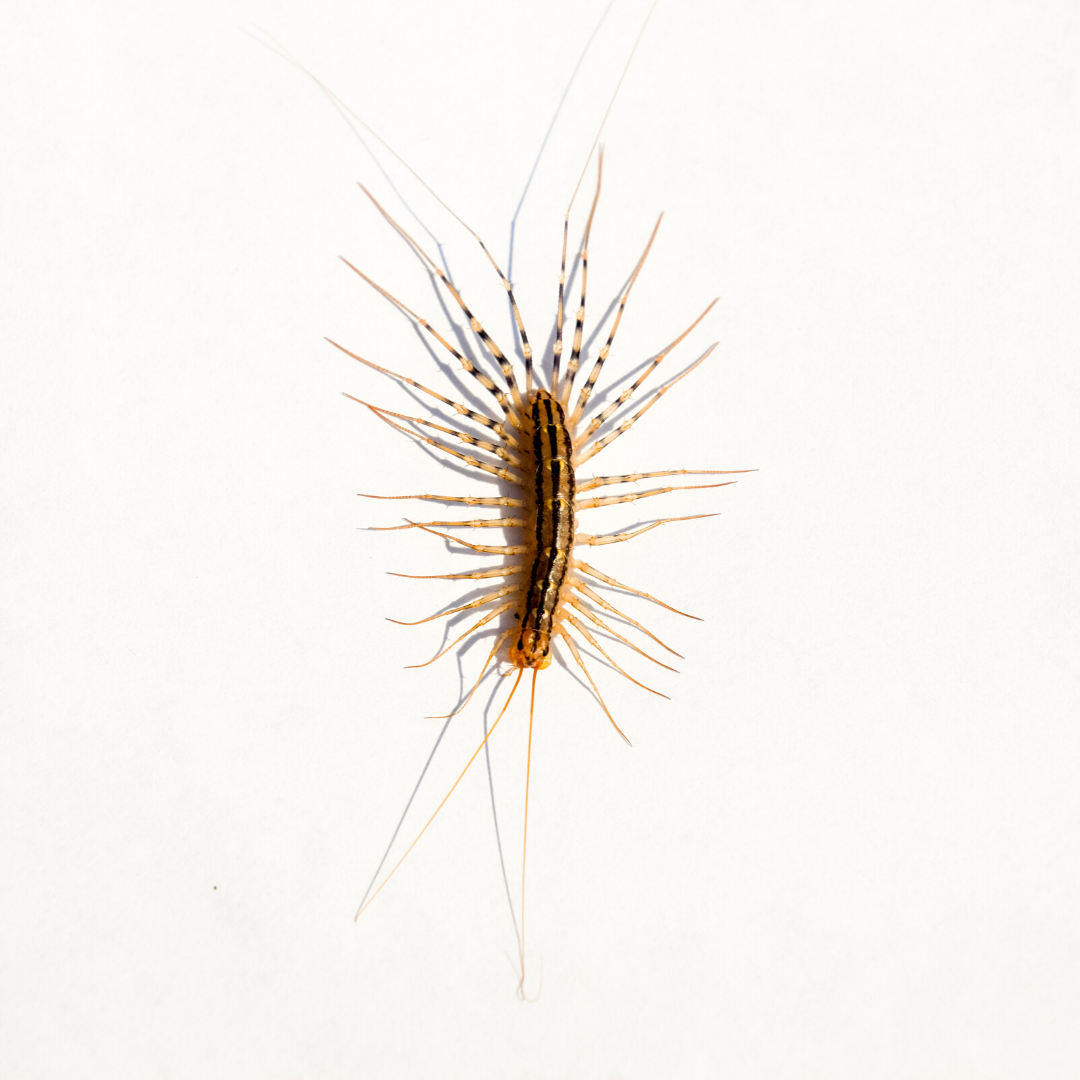House Centipedes in the Pacific Northwest
House centipedes have a very distinctive appearance, with fifteen pairs of long and thin legs protruding from their yellowish body. Though house centipedes may look frightening, they are actually beneficial invertebrates that can help control cockroach and spider populations. These creatures are not considered to be harmful when outdoors, but it can be startling or displeasing to find one inside your home. House centipedes can be a pest if they are sharing a living space with us.
House Centipede Habitat
House centipedes are drawn to dark, damp spaces with access to plenty of insects that they can feed on. Outside, they are often found beneath stones, below porches, or under moist leaf litter. Though these creatures are not harmful, they can move at an alarming speed to find a dark hiding place if they have been disturbed. When found indoors, house centipedes typically stay in moist areas such as bathrooms, cellars, or closets. An abundance of house centipedes in your home could indicate that there is an underlying moisture problem that should be addressed.
House Centipede Behaviors, Threats, or Dangers
House centipedes are not aggressive, though they might attempt to bite if they feel threatened. However, their jaws are weak and struggle to penetrate the skin. A successful bite can lead to pain and swelling, but not any worse than that of a bee sting. Though house centipedes are not considered harmful to humans, they do have a pair of unique poison claws behind their heads that they use to paralyze their prey. These creatures typically stay in yards to feed on small insects and they may enter your home through open cracks or crevices. If you are encountering an excessive amount of house centipedes in your home or on your property, it may be useful to contact your local exterminators for assistance.

